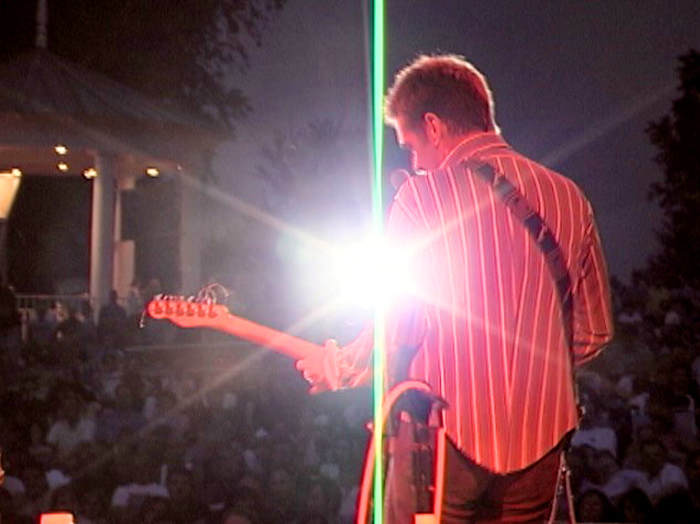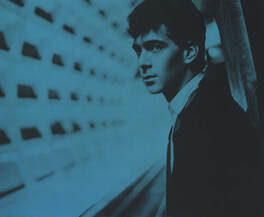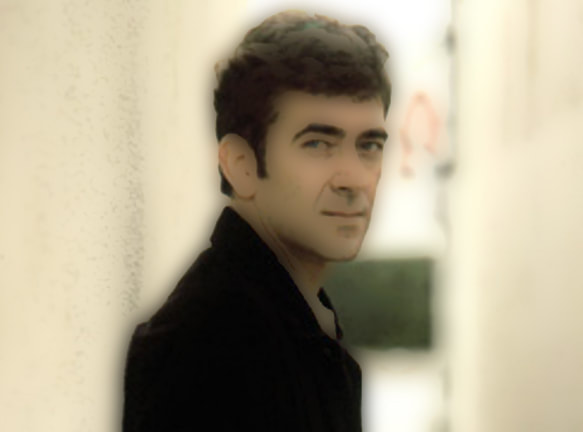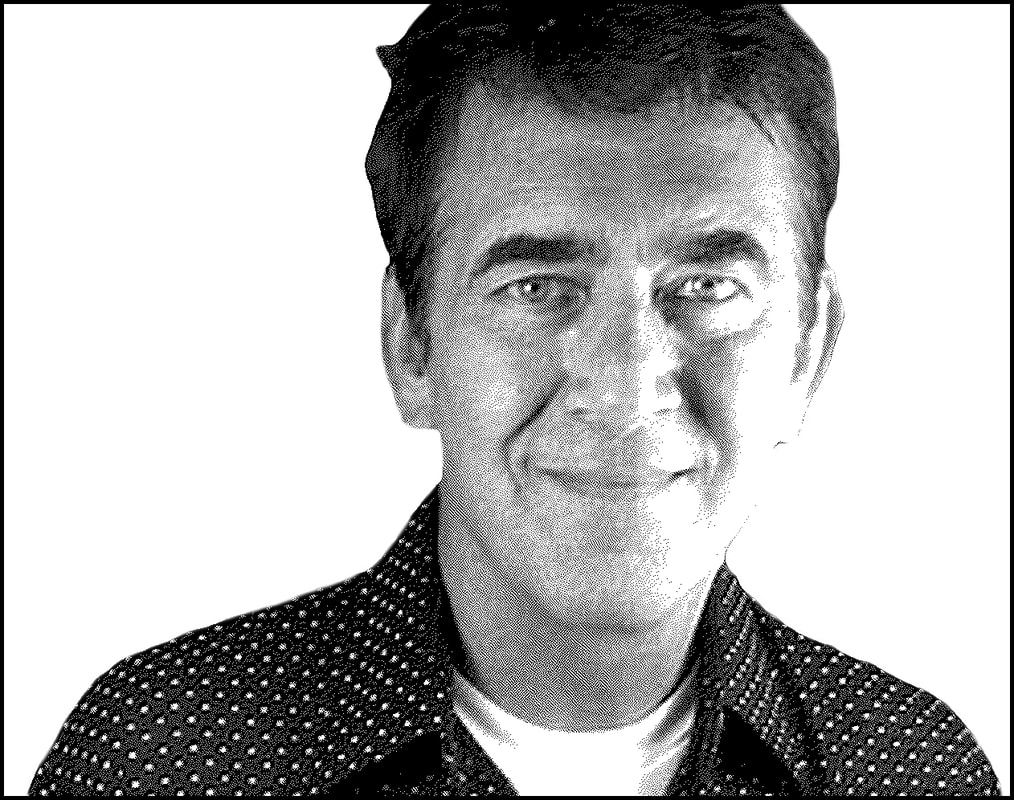Again… I did not intend to spend the week celebrating the legacy of dead musicians…
I first encountered Tommy Keene back in the late 80s when I started going to concerts at the 9:30 Club and it seemed like Tommy and his band were the opening act or one of the opening acts for every new wave band I went to see. In fact we used to joke that if an opening act phoned in to cancel because their van had broken down or someone was sick, the next call the 9:30 would make would be to Tommy’s house to see what he was doing that night and how soon he could get down to 9th and F. I never minded seeing Tommy’s name on the bill or being surprised by his appearance on the stage because I loved his jangly power pop sound. I also loved the exuberance of his performance. He always seemed so happy to be on stage playing his guitar; bouncing around the stage, tossing his head from side to side and leading his band through a set of buoyant, familiar tunes. There was also a sense that Tommy was “going places” and he would take the whole city along with him.
Sadly, that never really happened to the extent we all expected or the degree to which it should if the universe was indeed a fair and just place. Despite an impressive debut album, Strange Alliance (which hung like an expensive trophy above the cash register at Yesterday & Today Records—tempting me for years until Doug Tull, Tommy’s first drummer, pulled a copy out of a box in his basement three years ago and just handed it to me), a trio of excellent EP's (one of which, Places That Are Gone, was voted the #1 EP in the following year's Village Voice Pazz & Jop Poll), being handpicked by film director Richard Tuggle to appear in his 1986 film Out of Bounds, along with Siouxsie and the Banshees, and (what was supposed to be) a big break-through album on a big-name label with a big name producer and lot’s of big name money, Tommy just never really hit the big time he deserved. Over the years following the disappointing reception for Songs From the Film (which did make it into Billboard’s Top 200 chart in 1986) it became clear that “getting the aclaim he deserved” was probably never going to happen, but fortunately that did not stop Tommy from releasing nearly a dozen albums loaded with thoughtful power pop gems between 1986 and 2015.
I first encountered Tommy Keene back in the late 80s when I started going to concerts at the 9:30 Club and it seemed like Tommy and his band were the opening act or one of the opening acts for every new wave band I went to see. In fact we used to joke that if an opening act phoned in to cancel because their van had broken down or someone was sick, the next call the 9:30 would make would be to Tommy’s house to see what he was doing that night and how soon he could get down to 9th and F. I never minded seeing Tommy’s name on the bill or being surprised by his appearance on the stage because I loved his jangly power pop sound. I also loved the exuberance of his performance. He always seemed so happy to be on stage playing his guitar; bouncing around the stage, tossing his head from side to side and leading his band through a set of buoyant, familiar tunes. There was also a sense that Tommy was “going places” and he would take the whole city along with him.
Sadly, that never really happened to the extent we all expected or the degree to which it should if the universe was indeed a fair and just place. Despite an impressive debut album, Strange Alliance (which hung like an expensive trophy above the cash register at Yesterday & Today Records—tempting me for years until Doug Tull, Tommy’s first drummer, pulled a copy out of a box in his basement three years ago and just handed it to me), a trio of excellent EP's (one of which, Places That Are Gone, was voted the #1 EP in the following year's Village Voice Pazz & Jop Poll), being handpicked by film director Richard Tuggle to appear in his 1986 film Out of Bounds, along with Siouxsie and the Banshees, and (what was supposed to be) a big break-through album on a big-name label with a big name producer and lot’s of big name money, Tommy just never really hit the big time he deserved. Over the years following the disappointing reception for Songs From the Film (which did make it into Billboard’s Top 200 chart in 1986) it became clear that “getting the aclaim he deserved” was probably never going to happen, but fortunately that did not stop Tommy from releasing nearly a dozen albums loaded with thoughtful power pop gems between 1986 and 2015.
 Tommy performing “A Child Could Tell” at the BandHouse Gigs tribute to Nils Lofgren in August 2004.
Tommy performing “A Child Could Tell” at the BandHouse Gigs tribute to Nils Lofgren in August 2004.
I finally got to meet Tommy in person in 2004 when I was asked to film the very first BandHouse Gigs tribute, showcasing the career of Nils Lofgren. My friend Ronnie Newmyer knew I was a big fan so he went out of his way to introduce me to Tommy before the show. We talked about our mutual love for The Who, record collections, lovable labradors (he had a chocolate lab named Coco and I had a yellow lab named Chance), and shows at the old 9:30 Club. I told him our joke about being the “house band” there and he tried to remember the most last-minute call he ever got to come down and fill in for someone. Tommy performed on three songs at the Nils tribute. He played acoustic guitar and sang “Lost a Number,” he accompanied Eric “Roscoe” Ambel with his beat up Fender Telecaster on “A Child Could Tell,” and he played with Nils on “Love or Else.” During “A Child Could Tell,” a perfectly positioned handheld camera framed Tommy up in the beam of a spotlight that flared and freaked out spectacularly throughout his blistering guitar solo. That shot, cut frantically (some might say spastically) back and forth with the front stage cameras is one of my favorite moments from an absolutely unforgettable night. I remember Tommy struggling to keep his guitar from feeding back and that solo looks like a man wrestling with an instrument exerting a stubborn mind of its own. Brilliant.
 Tommy on stage at the 9:30 Club
Tommy on stage at the 9:30 Club
A few days after the show I got a call from Tommy asking if I could film him opening for Guided By Voices at the 9:30 Club. We had finally come full circle—even if the venue had changed addresses. Something about the sound mix wasn’t quite right that night and it put Tommy in a funk. I thought he channeled his frustration into an incredible performance, but he was clearly unhappy and you can see it in the videos I produced, especially the end of the Lou Reed cover, “Kill Your Sons,” where he pounds that same old Telecaster into the floor and then flings it across the stage where it lays buzzing until he finally silences it by violently stomping on a guitar pedal. All of this took place inches in front of my lens and I can remember thinking “please let me be in focus, please let me be in focus, please let me be in focus” as I held the shot and the stage lights went dark.
The stage lights have now gone permanently dark on the talented career of a musician who has brought me great joy over the years. His recorded music, which would just show up in my mailbox, never fails to transport me back to places that are gone every time I play it. His many live performances—including the ones I had the opportunity to document—are etched as significant memories in my mind of a man who loved rock n’ roll. He loved performing it. He loved listening to it. And in the final years of his career, he loved exploring it collaboratively with similar artists like Robert Pollard, Paul Westerberg and Matthew Sweet. I know in the “grand scheme of things” rock n’ roll will shrug this off and carry on, but I am grateful, like many, many others, for Tommy Keene’s lifelong dedication to craft the perfect power pop song, and all the pleasure his many attempts at doing so have given me. That’s why it only seems appropriate that today begins a small Happy Medium Song of the Day tribute to his music, starting in non-chronological order with one of my favorites, “Places That are Gone.”
(Please use the comments box to share your thoughts.)
(Please use the comments box to share your thoughts.)
Tommy Keene
1958-2017
R.I.P.
1958-2017
R.I.P.






